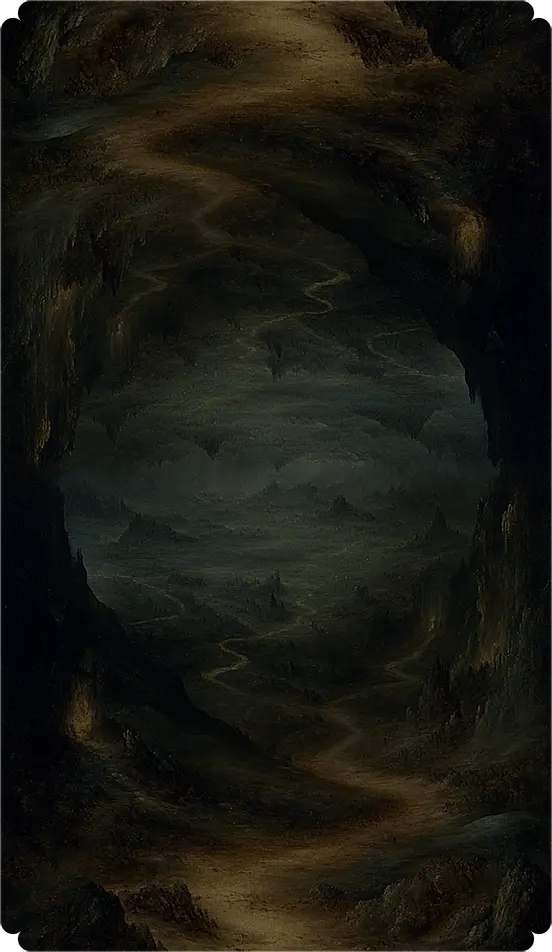V.
The Hierophant
General Description
The Hierophant represents tradition, spirituality, and the pursuit of wisdom through established systems. Often depicted as a spiritual leader seated between two pillars, he symbolizes the connection between the divine and earthly realms. The triple cross he holds signifies faith, doctrine, and authority. The two followers at his feet reflect the transmission of knowledge and guidance within a structured framework. The Hierophant encourages respect for traditions and the exploration of spiritual beliefs, offering a reminder to seek wisdom from those who have walked the path before.
Cultural Significance
The Hierophant is deeply rooted in religious and institutional symbolism. He can be seen as a representation of the Pope or high priest, acting as a mediator between humanity and the divine. Across cultures, the archetype of the spiritual teacher or mentor plays a crucial role in guiding individuals toward enlightenment. The Hierophant is also a reminder of the value of rituals and shared beliefs in creating a sense of community and continuity. While some see this card as a symbol of rigid structures, it also represents the spiritual wisdom found in collective traditions.
Trivia
The Hierophant’s number, 5, signifies change, growth, and the lessons learned through challenges.
His hand gesture of blessing is similar to those seen in religious iconography across Christianity and other faiths.
In some decks, The Hierophant is called “The Pope,” emphasizing his role as a spiritual authority.
V.
The Hierophant
General Description
The Hierophant represents tradition, spirituality, and the pursuit of wisdom through established systems. Often depicted as a spiritual leader seated between two pillars, he symbolizes the connection between the divine and earthly realms. The triple cross he holds signifies faith, doctrine, and authority. The two followers at his feet reflect the transmission of knowledge and guidance within a structured framework. The Hierophant encourages respect for traditions and the exploration of spiritual beliefs, offering a reminder to seek wisdom from those who have walked the path before.
Cultural Significance
The Hierophant is deeply rooted in religious and institutional symbolism. He can be seen as a representation of the Pope or high priest, acting as a mediator between humanity and the divine. Across cultures, the archetype of the spiritual teacher or mentor plays a crucial role in guiding individuals toward enlightenment. The Hierophant is also a reminder of the value of rituals and shared beliefs in creating a sense of community and continuity. While some see this card as a symbol of rigid structures, it also represents the spiritual wisdom found in collective traditions.
Trivia
The Hierophant’s number, 5, signifies change, growth, and the lessons learned through challenges.
His hand gesture of blessing is similar to those seen in religious iconography across Christianity and other faiths.
In some decks, The Hierophant is called “The Pope,” emphasizing his role as a spiritual authority.
V.
The Hierophant
General Description
The Hierophant represents tradition, spirituality, and the pursuit of wisdom through established systems. Often depicted as a spiritual leader seated between two pillars, he symbolizes the connection between the divine and earthly realms. The triple cross he holds signifies faith, doctrine, and authority. The two followers at his feet reflect the transmission of knowledge and guidance within a structured framework. The Hierophant encourages respect for traditions and the exploration of spiritual beliefs, offering a reminder to seek wisdom from those who have walked the path before.
Cultural Significance
The Hierophant is deeply rooted in religious and institutional symbolism. He can be seen as a representation of the Pope or high priest, acting as a mediator between humanity and the divine. Across cultures, the archetype of the spiritual teacher or mentor plays a crucial role in guiding individuals toward enlightenment. The Hierophant is also a reminder of the value of rituals and shared beliefs in creating a sense of community and continuity. While some see this card as a symbol of rigid structures, it also represents the spiritual wisdom found in collective traditions.
Trivia
The Hierophant’s number, 5, signifies change, growth, and the lessons learned through challenges.
His hand gesture of blessing is similar to those seen in religious iconography across Christianity and other faiths.
In some decks, The Hierophant is called “The Pope,” emphasizing his role as a spiritual authority.



